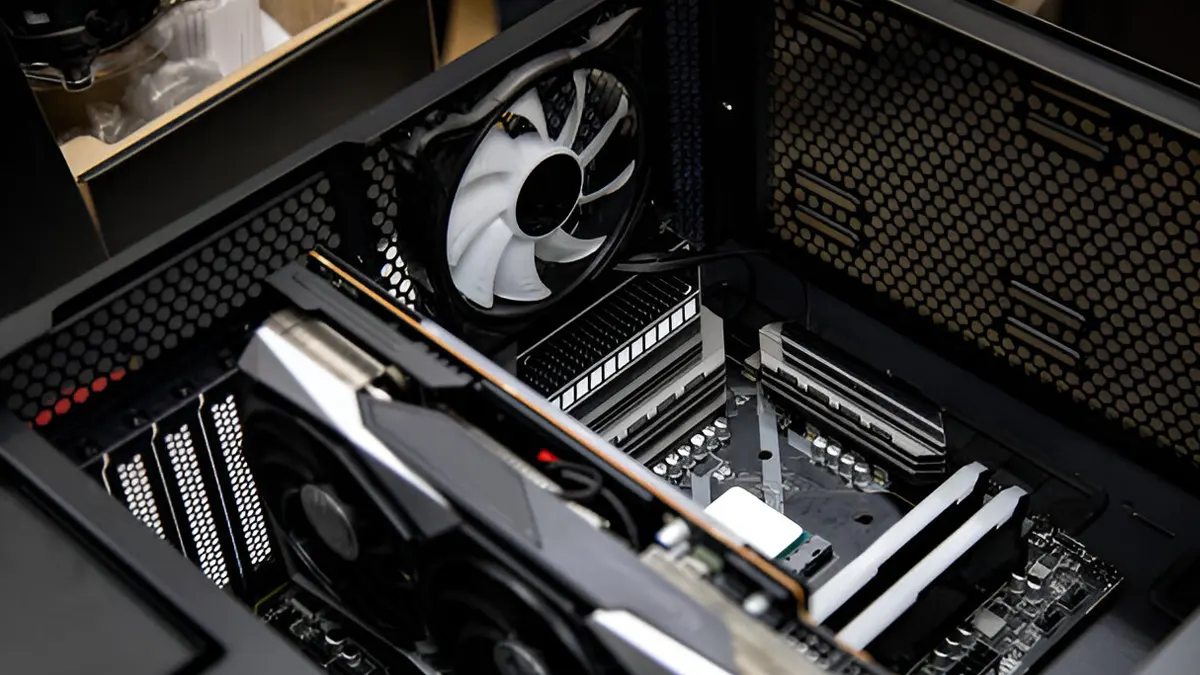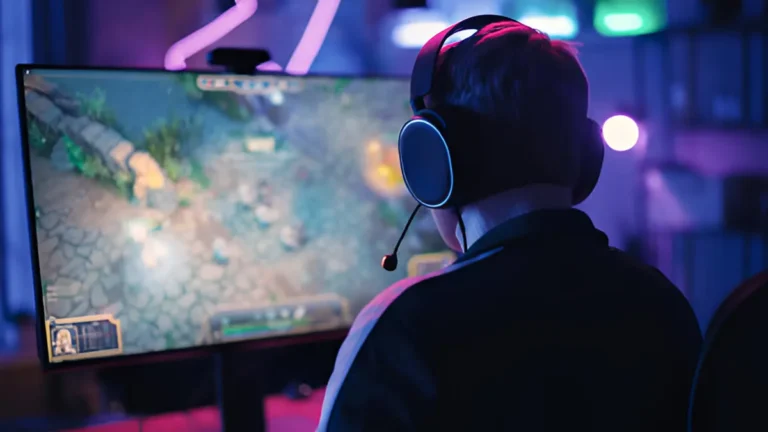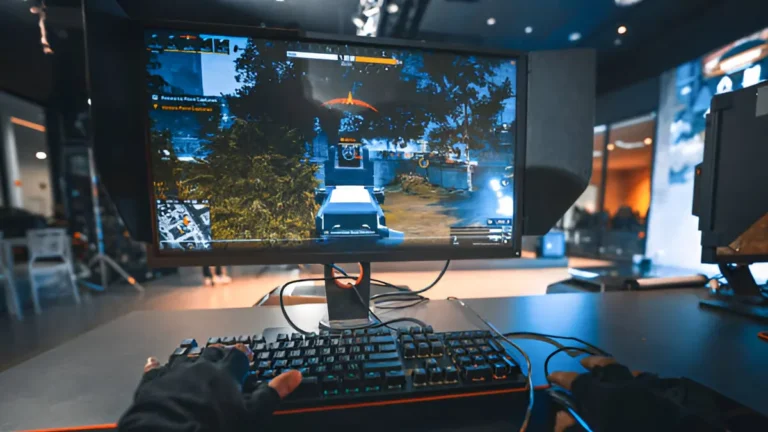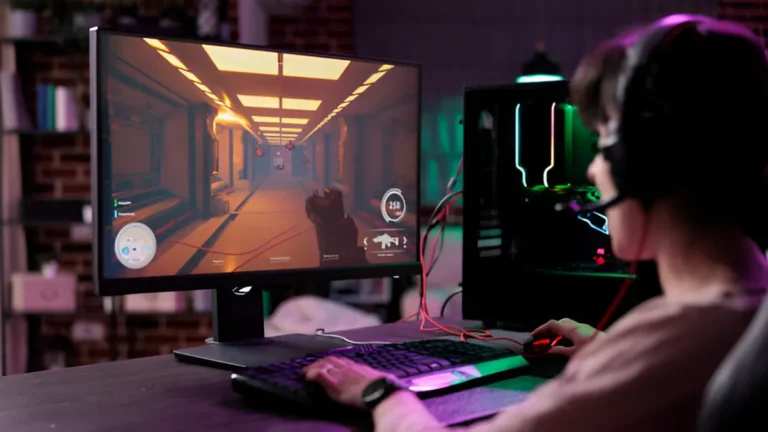Intel Alder Lake processors deliver strong single-core performance, making them well-suited for modern gaming workloads. These processors come with two types of cores: Performance-cores (P-cores) and Efficient-cores (E-cores). Intel Core i7-12700K supports 8 P-cores and 4 E-cores for a total of 12 cores and 20 threads, which reduces CPU bottlenecks in GPU-bound gaming when paired with high-end graphics cards. The hybrid architecture enables higher scheduling efficiency compared to 11th Gen Rocket Lake CPUs.
The i7-12700K provides excellent value for gaming CPUs, offering 95% of Intel Core i9-12900K gaming performance at nearly 25% lower cost. Benchmarks from TechPowerUp (2022) and Tom’s Hardware show consistent averages of 172 FPS in Assassin’s Creed Valhalla, 178 FPS in Shadow of the Tomb Raider, and 185 FPS in Horizon Zero Dawn at 1080p Ultra when paired with NVIDIA RTX 3080. These results confirm no GPU bottleneck when the i7-12700K is paired with RTX 3080, RTX 3090, or AMD Radeon RX 6800 XT.
As for the graphics card, NVIDIA RTX 3000-series cards such as RTX 3070 Ti, RTX 3080, and RTX 3090 deliver higher ray tracing throughput and DLSS scaling efficiency, while AMD RX 6000-series cards like RX 6800 XT and RX 6900 XT offer better cost-per-frame in rasterization workloads. The RTX 3090 with 24 GB GDDR6X memory excels in 4K ray tracing, while the RX 6900 XT achieves up to 210 FPS in esports titles like Rainbow Six Siege at 1440p.
In this article, we will compare NVIDIA and AMD graphics cards to identify the best options for Intel Core i7-12700K across gaming and productivity tasks. The comparison includes performance-per-dollar, VRAM capacity, ray tracing benchmarks, and productivity workloads such as Blender and Adobe Premiere Pro rendering.
NVIDIA GeForce RTX 3090
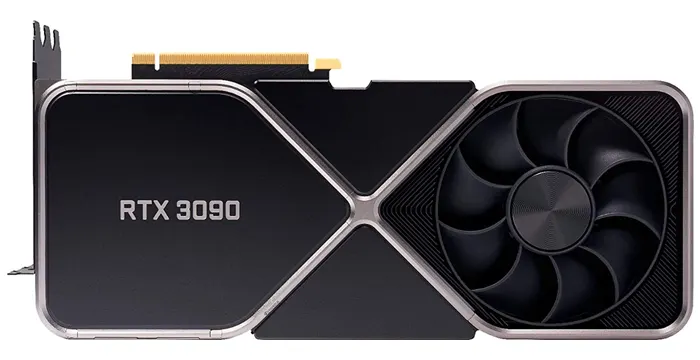
| Specification | Details |
|---|---|
| GPU Model | NVIDIA GeForce RTX 3090 |
| Architecture | Ampere (8nm process) |
| CUDA Cores | 10496 |
| Base Clock | 1395 MHz |
| Boost Clock | 1695 MHz |
| Memory Size | 24 GB GDDR6X |
| Memory Speed | 19.5 Gbps |
| Memory Interface | 384-bit |
| Memory Bandwidth | 936 GB/s |
| Ray Tracing Cores | 2nd Generation |
| Tensor Cores | 3rd Generation |
| TGP (Power Draw) | 350 W |
| Recommended PSU | 750 W minimum |
| Power Connectors | 1× 12-pin (adapter from 2× 8-pin); AIB models vary |
| Cooling System | Dual-axial flow-through (FE); partner coolers vary |
| Display Outputs | 1× HDMI 2.1, 3× DisplayPort 1.4a |
| Bus Interface | PCI Express 4.0 x16 |
| DirectX Support | DirectX 12 Ultimate |
| OpenGL Support | OpenGL 4.6 |
| OpenCL Support | OpenCL 3.0 |
| Form Factor | ~3-slot (varies by model) |
| Dimensions (FE) | ~313 × 138 × 55 mm |
| Target Resolution | 4K and 8K gaming |
NVIDIA GeForce RTX 3090 has 24GB GDDR6X memory running at 19,500 MHz effective speed, making it one of the highest-performing GPUs available in 2023. It leads the Nvidia Ampere lineup in raw compute power. The Samsung 8nm process node contributes to performance efficiency with a 350W TDP. GeForce RTX 3090 delivers stable 60–100 fps in most AAA titles at 4K resolution. With DLSS 2.0 technology, the GPU renders higher frame rates while maintaining image quality and lowering system load.
GeForce RTX 3090 is not a Titan-class card, but it surpasses all previous consumer GPUs in performance benchmarks. It targets enthusiasts and workstation users rather than average gamers. The price averages $1,499–$1,999 at launch, positioning it as a premium component. RTX 3090 can bottleneck with i7-12700K in 1080p gaming, but scales efficiently at 1440p and 4K workloads. For users building a high-end system that prioritizes GPU-intensive tasks, the RTX 3090 remains a top choice.
This GPU accelerates creator workloads such as 3D rendering in Blender, 8K video editing in Adobe Premiere Pro, and AI model training. The card reduces render times by up to 30% compared to RTX 3080 in professional applications. All in all, if you require workstation-grade performance with i7-12700K and accept its high cost, GeForce RTX 3090 offers unmatched computational and graphical power.
AMD Radeon RX 6800 XT
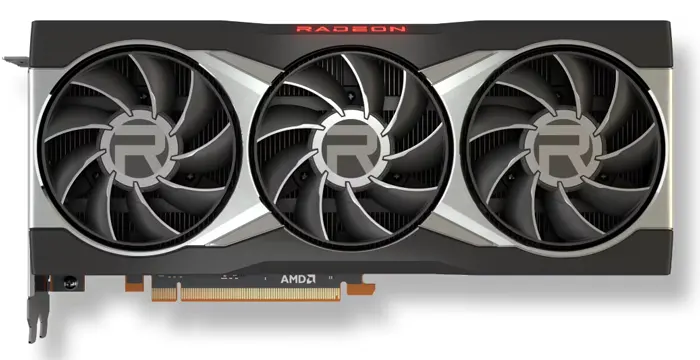
| Specification | Details |
|---|---|
| GPU Model | AMD Radeon RX 6800 XT |
| Architecture | RDNA 2 (7nm process) |
| Stream Processors | 4608 |
| Base Clock | ~1825 MHz |
| Game Clock | ~2015 MHz |
| Boost Clock | Up to 2250 MHz |
| Memory Size | 16 GB GDDR6 |
| Memory Speed | 16 Gbps |
| Memory Interface | 256-bit |
| Memory Bandwidth | 512 GB/s |
| Infinity Cache | 128 MB |
| Ray Accelerators | 72 |
| TDP (Power Draw) | ~300 W |
| Recommended PSU | 750 W minimum |
| Power Connectors | 2× 8-pin |
| Cooling System | Triple-fan reference cooler (varies by AIB models) |
| Display Outputs | 1× HDMI 2.1, 2× DisplayPort 1.4, 1× USB-C (VirtualLink) |
| Bus Interface | PCI Express 4.0 x16 |
| DirectX Support | DirectX 12 Ultimate |
| OpenGL Support | OpenGL 4.6 |
| OpenCL Support | OpenCL 2.1 |
| Form Factor | 2.5-slot |
| Dimensions | ~267 × 120 × 50 mm (reference card) |
| Target Resolution | 1440p and 4K gaming |
AMD Radeon RX 6800 XT was launched as a direct competitor to the RTX 3080. The GPU has 16GB GDDR6 VRAM, a game clock of 2015 MHz, and a boost clock up to 2250 MHz. It is based on AMD RDNA 2 architecture, which improves rasterization and hardware-accelerated ray tracing. The card rivals the Nvidia RTX 3080 in many benchmarks and outperforms it in some rasterized gaming workloads.
Radeon RX 6800 XT comes with AMD driver and software support, which ensures a smooth experience. A limitation of this GPU is inconsistent ray tracing performance compared to Nvidia cards.
You can play modern games in 4K resolution at 60 FPS or higher in titles such as Assassin’s Creed Valhalla, Horizon Zero Dawn, Cyberpunk 2077, and Red Dead Redemption 2. If you pair this card with an i7-12700K, the CPU and GPU combination avoids bottlenecks and delivers long-term high-end performance without becoming obsolete quickly.
AMD Radeon RX 6900 XT
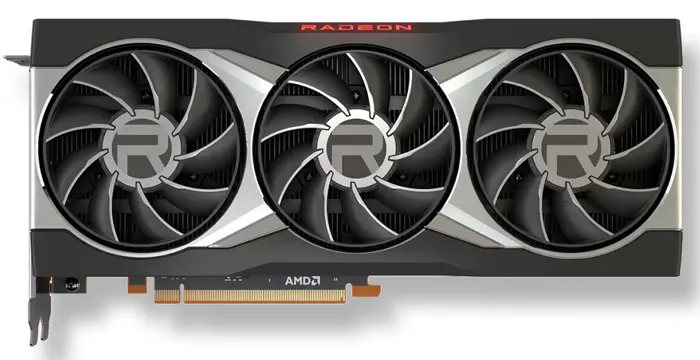
| Specification | Details |
|---|---|
| GPU Model | AMD Radeon RX 6900 XT |
| Architecture | RDNA 2 (7nm process) |
| Stream Processors | 5120 |
| Base Clock | ~1825 MHz |
| Game Clock | ~2015 MHz |
| Boost Clock | Up to 2250 MHz |
| Memory Size | 16 GB GDDR6 |
| Memory Speed | 16 Gbps |
| Memory Interface | 256-bit |
| Memory Bandwidth | 512 GB/s |
| Infinity Cache | 128 MB |
| Ray Accelerators | 80 |
| TDP (Power Draw) | ~300 W |
| Recommended PSU | 850 W minimum |
| Power Connectors | 2× 8-pin |
| Cooling System | Triple-fan reference cooler (varies by AIB models) |
| Display Outputs | 1× HDMI 2.1, 2× DisplayPort 1.4, 1× USB-C (VirtualLink) |
| Bus Interface | PCI Express 4.0 x16 |
| DirectX Support | DirectX 12 Ultimate |
| OpenGL Support | OpenGL 4.6 |
| OpenCL Support | OpenCL 2.1 |
| Form Factor | 2.5-slot |
| Dimensions | ~267 × 120 × 50 mm (reference card) |
| Target Resolution | 4K gaming |
AMD has historically focused on mainstream gamers by offering lower-cost graphics cards, while NVIDIA has dominated the premium GPU market with flagship products aimed at enthusiasts. However, with the RX 6000 series based on the RDNA 2 architecture released in 2020, AMD entered the high-end consumer segment to compete directly with NVIDIA.
The AMD Radeon RX 6900 XT is the flagship Navi 21 XTX GPU, designed to rival the NVIDIA GeForce RTX 3090 in rasterization performance. The card features 16 GB of GDDR6 memory, a 2135 MHz game clock, and a 2365 MHz maximum boost clock. It has a 300 W total board power (TBP) and 5120 stream processors. This generation also introduced hardware-accelerated ray tracing, allowing AMD to compete with NVIDIA’s RTX technology.
These specifications result in an average 4K gaming performance of around 95–105 FPS in titles such as Shadow of the Tomb Raider and Assassin’s Creed Valhalla, according to TechPowerUp benchmarks (2021). In competitive esports titles, the RX 6900 XT can exceed 200 FPS at 1080p. The GPU offers overclocking headroom of approximately 5–10% performance uplift, unlike previous AMD generations. Even at stock settings, the RX 6900 XT delivers stable frame rates across modern AAA games, making it a viable choice for pairing with the Intel Core i7-12700K.
NVIDIA GeForce RTX 3070
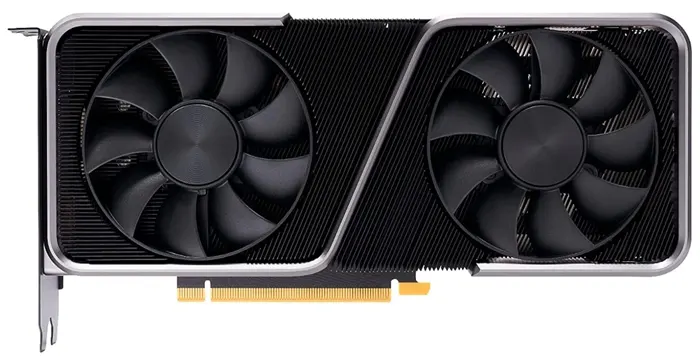
| Specification | Details |
|---|---|
| GPU Model | NVIDIA GeForce RTX 3070 |
| Architecture | Ampere (8nm process) |
| CUDA Cores | 5888 |
| Base Clock | 1500 MHz |
| Boost Clock | 1725 MHz |
| Memory Size | 8 GB GDDR6 |
| Memory Speed | 14 Gbps |
| Memory Interface | 256-bit |
| Memory Bandwidth | 448 GB/s |
| Ray Tracing Cores | 2nd Generation |
| Tensor Cores | 3rd Generation |
| TDP (Power Draw) | 220 W |
| Recommended PSU | 650 W minimum |
| Power Connectors | 1× 12-pin (FE adapter from 2× 8-pin); AIB models usually 2× 8-pin |
| Cooling System | Dual-axial fan cooler (FE); partner models vary |
| Display Outputs | 1× HDMI 2.1, 3× DisplayPort 1.4a |
| Bus Interface | PCI Express 4.0 x16 |
| DirectX Support | DirectX 12 Ultimate |
| OpenGL Support | OpenGL 4.6 |
| OpenCL Support | OpenCL 3.0 |
| Form Factor | 2-slot |
| Dimensions (FE) | ~242 × 112 × 40 mm |
| Target Resolution | 1440p and 4K gaming |
NVIDIA introduced real-time ray tracing with its Turing GPU architecture in 2018, starting with the RTX 2080 Ti, which was the fastest consumer graphics card of its generation. Now the company launched the second-generation of ray tracing GPUs, the RTX 3000 series in September 2020, based on Samsung’s 8nm process, featuring second-generation Ray Tracing cores and third-generation Tensor cores for DLSS acceleration.
The RTX 3070 was positioned as a mid-range card, and NVIDIA showcased its performance jump, achieving ~95–100% of the RTX 2080 Ti performance in 1440p gaming benchmarks according to TechPowerUp (2020).
The card has 5,888 CUDA cores and 8 GB of GDDR6 memory with 448 GB/s bandwidth. The base and boost clocks are 1500 MHz and 1725 MHz, respectively. Combined with real-time ray tracing support, NVENC hardware encoding/decoding, and efficient thermals, this GPU delivers ~70–90 FPS in modern AAA titles at 1440p Ultra settings, with playable 4K performance in optimized games.
NVIDIA GeForce RTX 3080
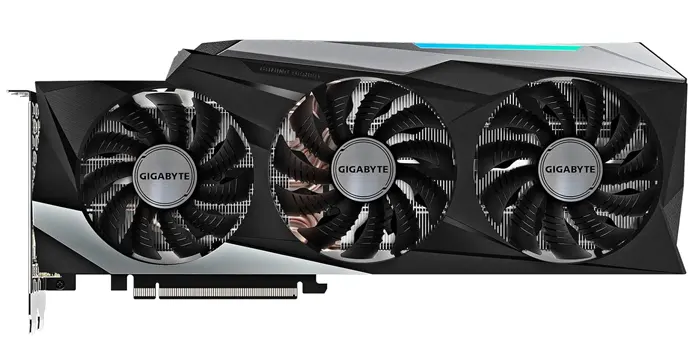
| Specification | Details |
|---|---|
| GPU Model | NVIDIA GeForce RTX 3080 |
| Architecture | Ampere (8nm process) |
| CUDA Cores | 8704 |
| Base Clock | 1440 MHz |
| Boost Clock | 1710 MHz |
| Memory Size | 10 GB GDDR6X |
| Memory Speed | 19 Gbps |
| Memory Interface | 320-bit |
| Memory Bandwidth | 760 GB/s |
| Ray Tracing Cores | 2nd Generation |
| Tensor Cores | 3rd Generation |
| TGP (Power Draw) | 320 W |
| Recommended PSU | 750 W minimum |
| Power Connectors | FE: 12-pin (adapter from 2× 8-pin); AIB: typically 2× 8-pin |
| Cooling System | Dual-axial flow-through (FE); partner models vary |
| Display Outputs | 1× HDMI 2.1, 3× DisplayPort 1.4a |
| Bus Interface | PCI Express 4.0 x16 |
| DirectX Support | DirectX 12 Ultimate |
| OpenGL Support | OpenGL 4.6 |
| OpenCL Support | OpenCL 3.0 |
| Form Factor | ~2-slot (varies by model) |
| Dimensions (FE) | ~285 × 112 × 40 mm |
| Target Resolution | 1440p and 4K gaming |
NVIDIA has brought in its advanced Ray Tracing technology with the advent of the RTX 3000-series graphics cards. They have introduced innovations like DLSS 2.0. Moreover, with these cards, NVIDIA supports 4K gaming performance that is up to 70% higher than the RTX 2080 Ti, making ultra-high-resolution gaming more accessible.
With technologies like NVIDIA Reflex, the company reduces system latency by up to 20 milliseconds in competitive titles, thus offering online competitive players an incentive to use their cards for a measurable advantage.
This is what the RTX 3080 delivers with its 10 GB of GDDR6X memory, 8704 CUDA cores, and a boost clock of 1.71 GHz. It offers 70–90% higher 4K gaming performance compared to the previous-generation RTX 2080 Ti, based on benchmarks from TechPowerUp and Tom’s Hardware. NVIDIA has redesigned the cooling system with a dual-axial fan layout to maintain temperatures below 75°C under full load. Pairing the RTX 3080 with an Intel Core i7-12700K results in a balanced CPU–GPU configuration that handles 1440p and 4K gaming without bottlenecks for most modern titles.
AMD Radeon RX 6800
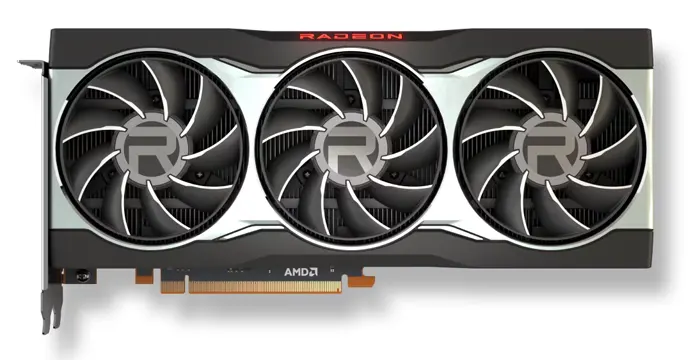
| Specification | Details |
|---|---|
| GPU Model | AMD Radeon RX 6800 |
| Architecture | RDNA 2 (7nm process) |
| Stream Processors | 3840 |
| Base Clock | ~1700 MHz |
| Game Clock | ~1815 MHz |
| Boost Clock | Up to 2105 MHz |
| Memory Size | 16 GB GDDR6 |
| Memory Speed | 16 Gbps |
| Memory Interface | 256-bit |
| Memory Bandwidth | 512 GB/s |
| Infinity Cache | 128 MB |
| Ray Accelerators | 60 |
| TDP (Power Draw) | ~250 W |
| Recommended PSU | 650 W minimum |
| Power Connectors | 2× 8-pin |
| Cooling System | Triple-fan reference cooler (varies by partner models) |
| Display Outputs | 1× HDMI 2.1, 2× DisplayPort 1.4, 1× USB-C (VirtualLink) |
| Bus Interface | PCI Express 4.0 x16 |
| DirectX Support | DirectX 12 Ultimate |
| OpenGL Support | OpenGL 4.6 |
| OpenCL Support | OpenCL 2.1 |
| Form Factor | 2.5-slot |
| Dimensions | ~267 × 120 × 50 mm (reference card) |
| Target Resolution | 1440p and 4K gaming |
The AMD Radeon RX 6800 is one of the best GPUs for Intel i7-12700K at 1440p and 4K gaming. It has 16GB GDDR6 VRAM and delivers up to 100+ FPS in modern AAA titles at 1440p Ultra settings. Modern games such as Cyberpunk 2077, Red Dead Redemption 2, and Hogwarts Legacy demand high GPU performance for maximum visual fidelity, and the RX 6800 meets these requirements. This GPU provides high image quality and smooth frame rates for both 1440p and 4K resolutions.
AMD has included 60 hardware ray tracing cores, enabling real-time ray tracing in supported games. The RX 6800 also supports game streaming through AMD’s hardware encoder. In terms of connectivity, the GPU provides 2 × DisplayPort 1.4 and 1 × HDMI 2.1, allowing connection of up to three displays simultaneously, improving productivity.
The RX 6800 has a 250W TDP, which is efficient compared to other high-end GPUs. AMD has integrated a triple-fan heatsink cooling system, and independent testing by TechPowerUp shows average temperatures of ~72°C under load. While some users report fan noise at higher RPMs, overall, the RX 6800 pairs effectively with an i7-12700K and delivers stable, lag-free performance.
ASUS GeForce RTX 3070 OC
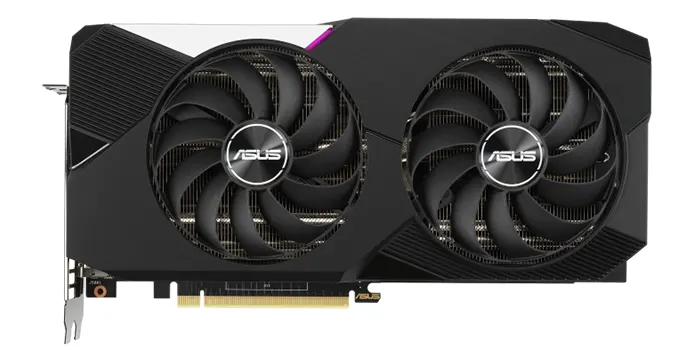
| Specification | Details |
|---|---|
| GPU Model | NVIDIA GeForce RTX 3070 |
| Architecture | Ampere (8nm process) |
| CUDA Cores | 5888 |
| Base Clock | ~1500 MHz |
| Boost Clock (OC Mode) | ~1845 MHz |
| Boost Clock (Gaming Mode) | ~1815 MHz |
| Memory Size | 8 GB GDDR6 |
| Memory Speed | 14 Gbps |
| Memory Interface | 256-bit |
| Memory Bandwidth | 448 GB/s |
| Ray Tracing Cores | 2nd Generation |
| Tensor Cores | 3rd Generation |
| TDP (Power Draw) | ~220 W |
| Recommended PSU | 650 W minimum |
| Power Connectors | 2× 8-pin |
| Cooling System | Triple-fan Axial-tech cooler with dual ball bearings |
| Display Outputs | 2× HDMI 2.1, 3× DisplayPort 1.4a |
| Bus Interface | PCI Express 4.0 x16 |
| DirectX Support | DirectX 12 Ultimate |
| OpenGL Support | OpenGL 4.6 |
| Form Factor | 2.9-slot |
| Dimensions | ~319 × 140 × 58 mm |
| Target Resolution | 1440p and 4K gaming |
ASUS has always released high-performance GPUs for gaming and workstation builds, and with the ASUS GeForce RTX 3070 OC graphics card, the performance is consistent. Featuring the second-generation ray tracing (RT) cores and third-generation Tensor cores, the card delivers measurable gains in rendering and AI workloads.
ASUS has included military-grade chokes and solid polymer capacitors, providing higher thermal efficiency with lower power leakage. The GPU features an all-white shroud with customizable RGB lighting. ASUS has increased the boost clock frequency to 1935 MHz, compared to 1770 MHz on the standard RTX 3070, giving a 9.3% higher core clock speed. The design matches white-themed PC cases used in custom builds.
The RTX 3070 OC supports 8K display output via HDMI 2.1. The GPU Tweak II utility enables manual control of fan curves, power limits, and overclocking profiles. Paired with an Intel Core i7-12700K processor, this combination delivers balanced gaming performance at 1440p and 4K resolutions, minimizing major CPU bottlenecks. The card’s 8 GB GDDR6 VRAM and 220 W TDP make it efficient for modern AAA titles, and PCIe 4.0 support ensures full bandwidth utilization.
XFX RX 5600 XT THICC II Pro
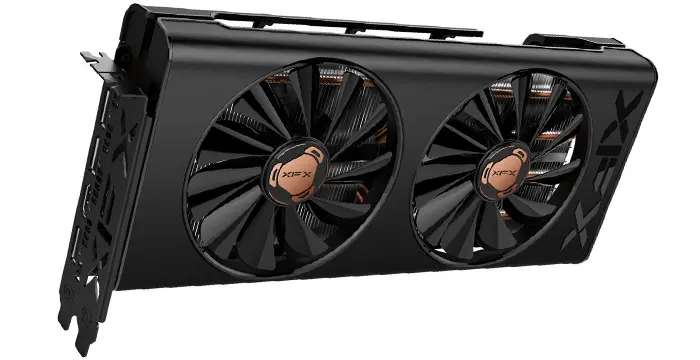
| Specification | Details |
|---|---|
| GPU Model | AMD Radeon RX 5600 XT |
| Architecture | RDNA (7nm process) |
| Stream Processors | 2304 |
| Base Clock | ~1130 MHz |
| Game Clock | ~1375 MHz |
| Boost Clock | ~1560 MHz |
| Memory Size | 6 GB GDDR6 |
| Memory Speed | 12–14 Gbps (depends on BIOS update) |
| Memory Interface | 192-bit |
| Memory Bandwidth | Up to 336 GB/s |
| TDP (Power Draw) | ~150 W |
| Recommended PSU | 450 W minimum |
| Power Connectors | 1× 8-pin |
| Cooling System | Dual-fan THICC II Pro cooler with aluminum heatsink |
| Display Outputs | 3× DisplayPort 1.4, 1× HDMI 2.0b |
| Bus Interface | PCI Express 4.0 x16 |
| DirectX Support | DirectX 12 |
| OpenGL Support | OpenGL 4.6 |
| OpenCL Support | OpenCL 2.0 |
| Form Factor | Dual-slot |
| Dimensions | ~280 mm length |
| Target Resolution | 1080p and 1440p gaming |
If you’re looking for an entry-level GPU that is budget-friendly and compatible with the Intel Core i7-12700K, then the XFX RX 5600 XT THICC II Pro can be a suitable option. The card features 6GB of GDDR6 memory, a 12 Gbps effective memory speed, a 192-bit memory bus, and a dual-slot card profile. These specifications allow smooth gaming at 1080p with high settings and 1440p at medium settings.
While the memory bus isn’t as fast as higher-end models, it is capable of delivering stable frame rates in modern games, and this makes it a valid entry in this list. Since it’s an entry-level card made for budget gamers, its performance is efficient for mainstream gaming workloads.
AMD designed this card with its RDNA 7nm architecture, and the card supports PCIe 4.0, making it a future-proof choice for mid-range systems. The GPU can output to an 8K display for desktop and media playback, but it is not designed for 8K gaming performance. The thermal design includes a dual-fan cooling solution that keeps temperatures around 70–75°C under load, which is lower than many similar dual-fan models, letting you game with consistent performance.

